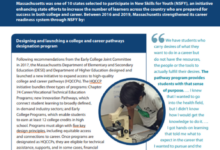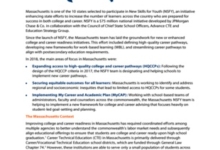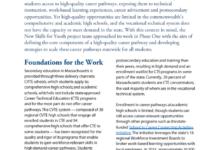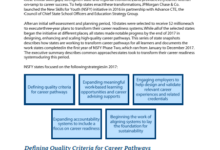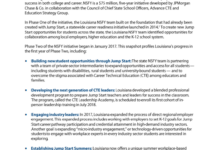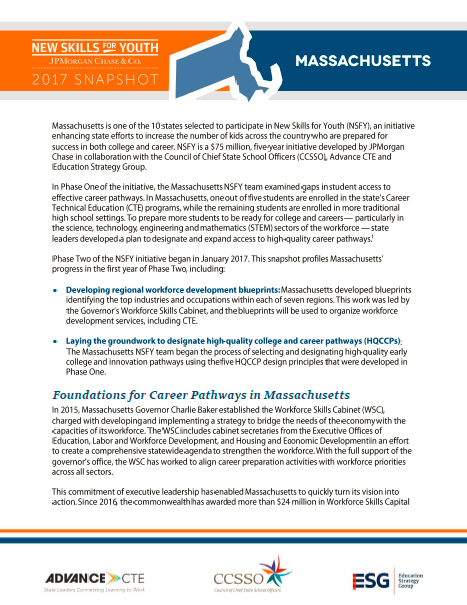Massachusetts is one of the 10 states selected to participate in New Skills for Youth (NSFY), an initiative enhancing state efforts to increase the number of kids across the country who are prepared for success in both college and career. NSFY is a $75 million, five-year initiative developed by JPMorgan Chase in collaboration with the Council of Chief State School Officers (CCSSO), Advance CTE and Education Strategy Group.
In Phase One of the initiative, the Massachusetts NSFY team examined gaps in student access to effective career pathways. In Massachusetts, one out of five students are enrolled in the state’s Career Technical Education (CTE) programs, while the remaining students are enrolled in more traditional high school settings. To prepare more students to be ready for college and careers — particularly in the science, technology, engineering and mathematics (STEM) sectors of the workforce — state leaders developed a plan to designate and expand access to high-quality career pathways.
Phase Two of the NSFY initiative began in January 2017. This snapshot profiles Massachusetts’ progress in the first year of Phase Two, including:
- Developing regional workforce development blueprints: Massachusetts developed blueprints identifying the top industries and occupations within each of seven regions. This work was led by the Governor’s Workforce Skills Cabinet, and the blueprints will be used to organize workforce development services, including CTE.
- Laying the groundwork to designate high-quality college and career pathways (HQCCPs): The Massachusetts NSFY team began the process of selecting and designating high-quality early college and innovation pathways using the five HQCCP design principles that were developed in Phase One.
To learn more about this work, read Massachusetts’ NSFY Phase One Snapshot.

